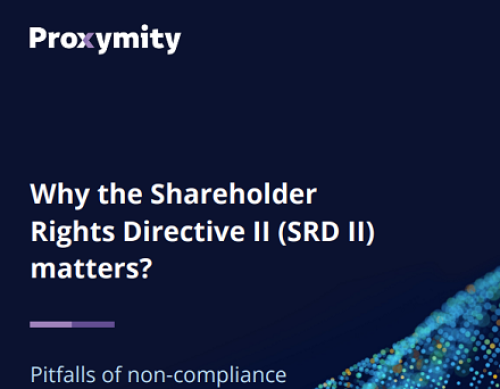Nineteen months into its existence, the impact of Mifid II is taking shape, with the latest study highlighting that sell-side research coverage has fallen – with some companies losing coverage completely.
The study – ‘The effects of Mifid II on sell-side analysts, buy-side analysts and firms’ – provides what it describes as ‘early but comprehensive evidence’ on the impact of the regulation, according to authors Bingxu Fang and Ole-Kristian Hope from the University of Toronto, Zhongwei Huang from City University in London and Rucsandra Moldovan from Concordia University in Montreal.
As the study’s title indicates, the authors scrutinized how the regulation has affected sell-side and buy-side research and impacted on listed companies that have lost analyst coverage since the introduction of Mifid II.
They find that sell-side analyst coverage of European companies has dropped ‘significantly’ – with 334 firms losing sell-side research coverage completely following the implementation of the regulation.
The potential loss of sell-side coverage may have important implications for firms, notes the study, a view echoed by Elena Basova, senior analyst at Nasdaq IR Intelligence, in an interview with IR Magazine earlier this year: ‘Mifid II is putting a lot of pressure on small and mid-cap IR teams due to the disruption the sell side has faced.’
On the decline in sell-side research as a trend, the report authors writes: ‘We observe that European firms, relative to North American firms, are 2.6 percent incrementally more likely to completely lose sell-side coverage after the Mifid II implementation using the Propensity-Score Matching sample, which represents a 157 percent increase relative to the unconditional mean of 1.65 percent (343 out of 20,791 observations). The impact of Mifid II on the loss of sell-side coverage is thus economically significant, which we view as a potentially serious consequence of the new regulation.’
A key finding within all this is that the analysts who stopped covering stocks tended to be less experienced and have poorer track records than those who continued to cover companies post-Mifid II. This has led to the fascinating result of the remaining analysts’ ratings of European firms being ‘incrementally more informative after the implementation of Mifid II,’ according to the paper. In essence, then, while there will be less coverage, it will be of a higher quality.
The authors are unable to conclude where analysts disappeared to when they stopped covering stocks, due to a lack of data. But they find ‘strong evidence that the number of buy-side analysts increased following Mifid II, suggesting that European investment firms turned to more in-house research after the implementation of the new regulation.’
On top of this increase in specific recruitment, the authors also identify another fascinating statistic: an increase in participation on corporate earnings calls by buy-side analysts, resulting in one more questions being asked by buy-side analysts per call in Europe than on the earnings calls of similar firms in North America.
If Mifid II takes a greater hold in the US – as indications are it is already doing – one would expect this trend to follow in North America.










